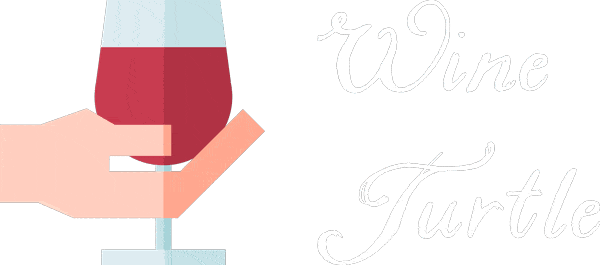10 Best Low Carb Wines [Lowest Carb Wine Guide]
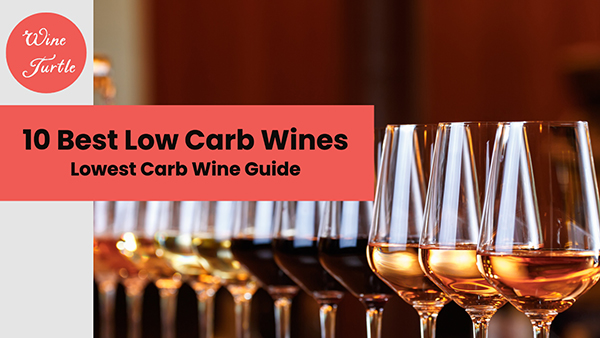
As a lover of wine, watching your carb intake can be a difficult discipline.
Winemakers aren't required by law to list nutritional information like carbohydrate content on their labels, so they choose not to.
That makes it really difficult to keep tabs on.
But thankfully, there are certain wine varietals that are typically very low in carbs.
In this guide, I'll tell you what they are and how you can pinpoint low carb wines for yourself.
I'll also recommend ten amazing wines with next to no carbs in them!
A Quick Introduction to Carbohydrates
Carbohydrates are a macronutrient that our bodies use as a source of energy.
They come in various forms, including sugars, starches, and fibers. When we consume carbs, our bodies break them down into glucose, which our cells use for energy.
The role that carbohydrates play in our diets is a topic of much debate among health professionals.
Some believe that carbs should make up a significant portion of our diets, while others recommend limiting their intake.
The ketogenic diet, for example, is a low-carb, high-fat diet that has gained popularity in recent years for its potential health benefits.
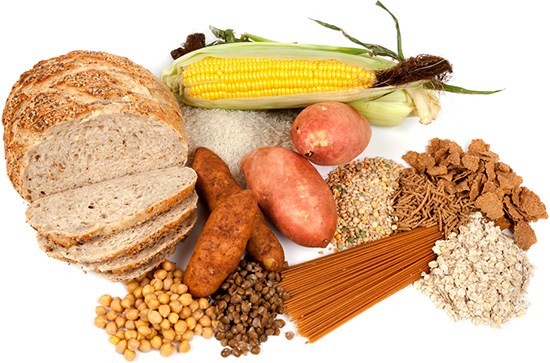
Some Foods High in Carbohydrates
Unpacking Carbs in Wine
When it comes to calculating the carb content of wine, there is just one key factor to consider:
Our ideal, low-carb wine should contain as little sugar as possible and ideally contain none at all.
We want dry wines and the drier the better!
You'll read a lot of misinformation on this on various websites promising low-carb wines. The misinformation is about the alcohol itself contributing to the carbohydrate content. This just isn't true.
Alcohol, specifically ethanol, does not contain carbohydrates. Ethanol is a type of alcohol that is produced by the fermentation of sugars by yeasts. While it is derived from carbohydrate-rich foods, the fermentation process converts these carbohydrates into alcohol, so ethanol itself does not contain carbohydrates.
However, too much alcohol can negatively impact blood sugar levels, which could potentially hinder your progress on a low-carb or keto diet, and is especially dangerous for a diabetic.
The tell-tale sign of a low carbohydrate wine (other than it being 'dry') is actually the high alcohol content. The rule is that the higher the ABV, the less sugar remains in the wine after fermentation.
But, this isn't full-proof! Other winemaking processes besides fermentation can affect the sugar content and carb count.
Some sparkling wines like Champagne, have sugar added after fermentation, which can result in more carbs per glass.
The process called dosage involves adding a mixture of liqueur de dosage (cane sugar and wine) just before bottling. The measurement is different depending on the type of Champagne being produced but for Champagne brut, it is "approximately 1cl for a 75cl bottle".
Fortified wines, such as port, also tend to have a higher sugar content due to the addition of brandy or other spirits during the process known as fortification.
The fortified spirit is added to halt fermentation prematurely, therefore, ensuring residual sugar is still present.
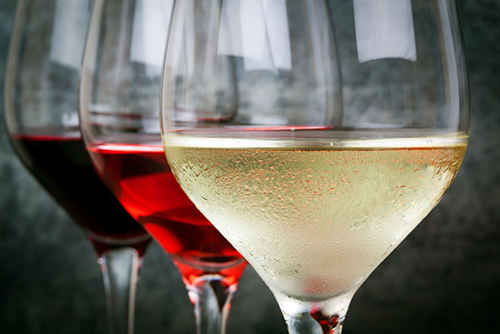
In general, a standard 5-ounce serving of wine contains between 1 and 6 grams of carbs, depending on the type of wine.
For example, a 5-ounce glass of Pinot Grigio contains around 3 grams of carbs, while a sweeter wine like Asti Spumante can contain upwards of 10 grams of carbs per serving.
It's important to note that carb counts can also vary according to the specific brand and winemaking process.
For those following a keto diet or limiting their carb intake, there are options for even lower-carb wines.
Brut Nature Champagne, for example, typically contains almost no sugar making it a great option for those looking for a really low-carb wine. Brut nature varieties exist in other forms of sparkling wine like Cava and Prosecco too.
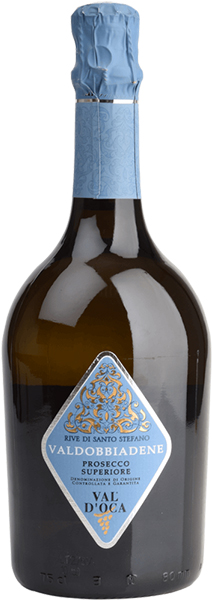
Brut Nature Prosecco
Carbohydrate Content of Popular Wines
For those following a low-carb or ketogenic diet, it's essential to know which wines are relatively low in carbs. In this section, I'll unpack the carb content of some popular wine varietals.
It's worth noting that carb content can vary quite wildly within a varietal too. The varietals that I've mentioned above are all typically dry wines, but you may find cheaper bottles that are a little sweeter (crowd pleasers) and they may contain more carbohydrates.
But, if you're really looking for the lowest-carb wines of them all then you need to go sparkling.
I alluded to the driest form of sparkling wine, brut nature, in the previous section, and if you're on a quest to consume as few carbs as possible then this is the variety of wine for you.
You can find brut nature varieties of all kinds of sparkling wine from Prosecco to Champagne to Cava and everything in between.
Brut nature wines are fermented to completion and have no added sugar which means they typically contain less than 1 gram of carbs per 5-ounce serving.
If you have a bit of wiggle room with regards to carbs and calories then the next step up with sparkling wine is extra brut. Extra brut wine contains about 1 gram of carbs per serving which is still incredibly low.
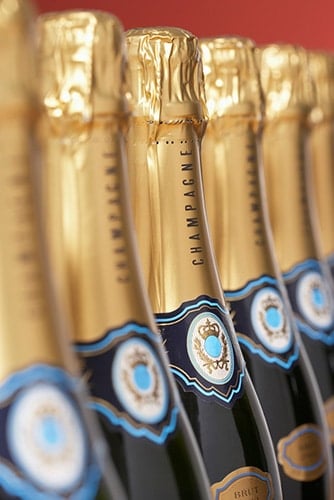
Champagne Buying Tip
A common pitfall that many people fall into when buying Champagne is to buy dry or extra dry Champagne and assume it's low in sugar.
Just like most French wine classifications, Champagne is incredibly confusing. Dry Champagne contains between 17-32 grams of sugar per liter while extra dry contains 12-17 g/L. They are not dry wines and you should buy, brut nature, extra brut, or even brut for low sugar, low carb bubbles.
Carbs in Wine Compared to Other Drinks
When it comes to drinking alcohol on a low-carb or ketogenic diet, lovers of wine have reason to rejoice.
Although alcoholic drinks are generally known to contain carbs, wine is often a more diet-friendly option.
Let's take a closer look at how the carbohydrate content of various alcoholic beverages compares.
When comparing wine to beer, wine typically comes out on top in terms of being lower in carbs. While a serving of beer can contain upwards of 10-15 grams of carbs, a 5-ounce glass of wine generally contains only 3-4 grams of carbs.
In fact, some popular beer styles like IPAs can contain over 20 grams of carbs per serving, making them a less-than-ideal option for those watching their carb intake. However, some dessert and fortified wines like Ice Wine and Tawny Port can easily match and even exceed this.
When it comes to distilled spirits like whiskey and vodka, the carb content is as low as it gets, zero! The nature of distilling alcohol means there is nothing really left at the end besides alcohol.
However, it's important to note that these drinks are often mixed with higher-carb mixers like sugary sodas and juices.
For example, a standard margarita can contain upwards of 20 grams of carbs due to the sweetened lime juice and triple sec.
Whiskey is actually an excellent choice of alcoholic drink for those on a low-carbohydrate diet as it contains zero carbs in a standard serving.
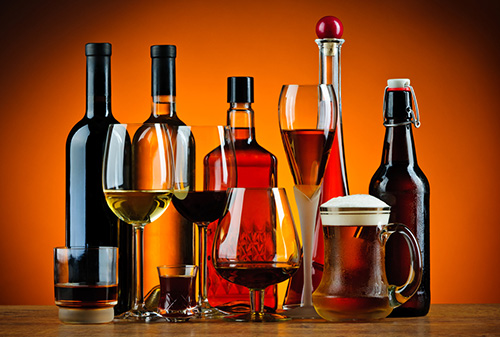
How to Identify Low-Carb Wine
So, we've established that low carb wine does exist but how can you identify it?
Here's what you need to know.
Firstly, it's important to understand that residual sugar is the key factor that contributes to the carb count in wine.
Wines with higher residual sugar content generally have more carbs than drier wines.
Therefore, when selecting wine, look for drier styles like Champagne, Sauvignon Blanc, and Pinot Noir. These tend to have a lower carb and sugar content compared to sweeter wines like some Riesling and Moscato.
Another helpful tip is to look at the wine's alcohol content. The higher the alcohol content, the lower the residual sugar content tends to be. However, this method should be used with caution as higher ABV wines can be sweet too.
Wines with alcohol levels above 14% are generally drier and have a lower carb content.
Sparkling wines and Champagne that are labelled as "Brut Nature" or "Extra Brut" have little to no added sugar and are great options for those following a low-carb lifestyle.
When it comes to wine labels, unfortunately, it's not always straightforward to determine the carb count.
Annoyingly, lawmakers in the US currently don't require winemakers to display nutritional information on labels.
However, some winemakers publish technical information on their websites. This information sometimes includes the residual sugar content which is really useful for carb counting (see how to convert below). You can see a list of technical sheets for Smak wines in Walla Walla here.
I've included the technical data for all of my wine recommendations below.
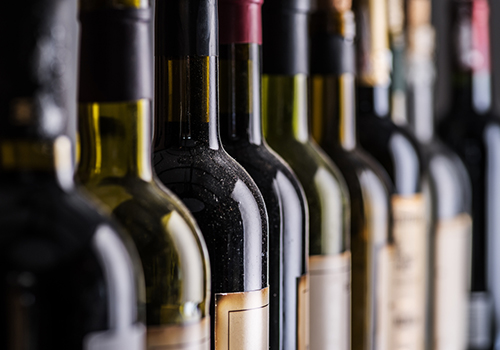
How to Convert Residual Sugar Content of Wine into Carbs
If you manage to find the residual sugar content of a wine you can easily convert this into the carbohydrate content per glass (standard serving of 5 oz or 150ml).
Residual sugar is almost always measured in grams per liter (g/L).
Simply, multiply this number by 0.15 and you have the carbs (in grams) per 5-ounce glass.
For example, a fictional dry Champagne contains 20 g/L of sugar.
Therefore, it contains 0.15*20 = 3 grams per glass of carbohydrates.
Converting Sugar Content to Carbohydrates
Residual Sugar (g/L) x 0.15 = Number of Carbohydrates per 5 ounce Serving
10 Lowest-Carb Wine Recommendations (Keto Wine)
So, which wines do I actually recommend as low-carb options that are great to drink?
Here you'll find some great-tasting keto-friendly wines that are really low in carbohydrates. I mean so low that they barely contain any at all!
I've included links to the technical information and also the carbohydrates per 5 ounce glass.
Red Wine
Choosing dry, low carb red wine doesn't mean missing out on big, bold, fruity flavors.
Here are some excellent options to get your started.
Rainstorm Pinot Noir 2021 - $18
0.045 Carbs per Glass

Pinot Noir really is the ultimate low-carb red wine. The grape is known for its lower sugar content which is exactly what we're looking for.
Light-bodied and dry it's also a great alternative to your typical full-bodied Cabernet Sauvignon.
This Pinot Noir from Willamette Valley comes in at 13% ABV and has wonderful notes of fresh strawberry and cherry.
It's got some great acidity that's integrated really well with some subtle minerality.
It's a great buy at around $18 and it pairs really well with earthy mushroom flavors.
Don't miss our guide to Costco Pinot Noir for some more great options.
Stark-Conde Stellenbosch Cabernet Sauvignon 2019 - $28
0.45 Carbs per Glass

Cabernet Sauvignon is big, bold and fruity but it's also one of the drier reds. It offers big fresh berry flavors without the sugar.
This cab comes from Stellenbosch in South Africa, an area renowned for this particular grape.
With just 3 grams of sugar per liter, it contains just 0.45 carbs per 5 oz glass of wine.
It's medium-bodied with a lovely balance of tannin and acidity.
Ripe blackcurrant, red berry, and cranberry notes were the stars of the show for me.
Pangea Syrah 2016 - $60
0.3 Carbs per Glass

If you like your red wine big, bold, and vibrant then Syrah is the one for you! With dark fruit flavours and chewy tannins, Syrah wine is rich and opulent.
It also happens to be dry and very low in sugar. It's often one of the higher ABV wines which is a signal that it doesn't contain much sugar (or carbs!).
This Chilean Syrah is elegant and complex with a finish that just never ends.
Blueberry and blackberry notes dominate but are seasoned with chocolate, white pepper and some subtle oak.
It's a fantastic wine that I never tire of drinking.
White Wine
All the big players are available when it comes to white wine varietals that don't contain many carbs.
Here are some of my favorites.
Oyster Bay Sauvignon Blanc 2022 - $16
0.45 Carbs per Glass

Sauvignon Blanc is an excellent low-carb option with typically only 3-4 grams of carbs per 5-ounce serving.
It's a crisp, refreshing white wine that pairs well with salads, seafood, and light grilled dishes.
With just 3g/L of residual sugar and less than 0.5 carbs per serving, this gorgeous Sauvignon Blanc is one of my favorite wallet-friendly wines.
The tropical fruit notes of lychee and guava give the wine a real fruitiness despite it being decidedly dry.
Pair it with lightly spiced Asian seafood for an absolute treat at the dinner table.
Terlan Pinot Grigio 2021 - $24
0.21 Carbs per Glass

Pinto Grigio is another awesome dry, low-carbohydrate white wine.
This particular recommendation comes from the tiny Alto Adige DOC in North East Italy and it's an absolute delight.
With just 1.3 g/L of sugar, it contains only 0.21 carbs in each glass.
Crisp grapefruit and melon notes linger on a wonderfully long finish.
Pair this with grilled fish or parma ham.
Montalto Single Vineyard 'The Eleven' Chardonnay 2018 - $36
0 to 0.15 Carbs per Glass

With the 2022 vintage Montalto has listed the residual sugar as N/A which means there isn't any sugar or there is just trace amounts.
I remember the 2017 having <1g/L so either they've brought the sugar content down even more or they just feel it's so negligible that it's not worth listing.
To be on the safe side, I've listed the range of carbs per glass to represent a sugar content of 0 to 1g/L. It's safe to say this is a dry wine!
It's a light, buttery Chardonnay with some minerality alongside fruity citrus, melon, and apple notes. It's got a nice length of finish with some great acidity.
Rosé Wine
Rosé wine is typically considered a sweeter wine, which might make you skeptical about its carb content.
However, dry varieties do exist with the Côtes de Provence region of France being particularly famous for its dry rosé.
Miraval Côtes de Provence Rosé - $21
0.03 Carbs per Glass
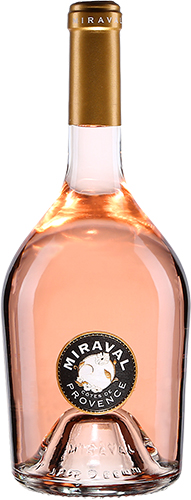
This fantastic rosé is well worth its $21 price tag. It's a really fresh wine with notes of strawberry and raspberry giving it that berry fruitiness that great rosés possess.
It's got citrus notes in the way of grapefruit and some zippy acidity that's balanced well.
Pair it with salads, seafood, and lightly grilled dishes.
It's also about as dry as it gets with just 0.2 g/L of residual sugar.
This means that it contains next to no carbs with just 0.03 per glass.
Bodega Garzón Estate Pinot Rosé de Corte 2020 - $18
0.39 Carbs per Glass

This is a Pinot Noir based rosé blend that also contains 15% Cabernet Franc and 5% Merlot.
It comes from Maldonado in Uruguay, an area famed for its unique soil and microclimate.
It's an aromatic wine with strawberry and cherry notes underpinned by some minerality and pleasant acidity.
Sparkling Wine
I've talked up sparkling wines a lot in this guide and now it's time for me to back up my words!
Loriot-Pagel Brut Nature Champagne - $40
0.075 Carbs per Glass

This is a Meunier-based cuvée (3% Pinot Noir and 2% Chardonnay) with zero dosage (added sugar before bottling).
It's often hard with brut nature wines to achieve the right balance but this Champagne absolutely nails it.
It's got some great acidity that makes it a great companion for food.
Try it with cheese or fish for a great pairing.
Roger Goulart Cava Reserva Brut Nature - $18
0.3 Carbs per Glass

Cava is a crisp, dry, and refreshing sparkling wine that can contain very little residual sugar.
This particular Cava is a blend of indigenous Spanish grapes Xarello (40%), Macabeo (30%), and Parellada (30%).
Pleasant notes of lemon, grapefruit and white flowers give it a fresh character that's backed up by some punchy acidity.
The fruit lingers on a decently long finish that ends in chalky minerality. Enjoy this with seafood, fruit, or hard cheese.
High-Carb Wines to Avoid
I've recommended the best low-carb wines and now it's time to highlight the wines you should avoid at all costs!
Can You Drink Wine on a Diet?
Yes, but in moderation.
While wine does contain calories and carbs, it can still be a part of a healthy diet when consumed in moderation.
Guidelines suggest men should consume no more than two drinks per day and women no more than one.
The key is to choose low-carb wines, which typically have residual sugar levels of 0-3 grams per liter.
If you're precisely counting every carb you consume then only buy wine that you can tell is low in sugar by looking at its technical data sheet.
Remember, to calculate the carbohydrates per glass you just need to multiply the sugar content in g/L by 0.15.
If you're on a ketogenic diet it's important to note that alcohol can have an impact on blood sugar levels, which is why moderation is key.
Drinking too much wine can lead to a temporary rise in blood sugar levels, which can kick you out of ketosis.
